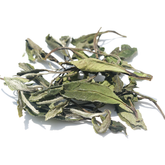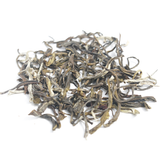Taste the Difference: The 6 Types of Chinese Tea
In our previous beginner’s tea guides, you’ve already learned what real tea is and why Chinese loose leaf tea is so different from the typical tea bags . Now, get ready to be amazed by the incredible diversity created by the Camellia_sinensis tea plant! Although all true teas come from the same plant, Chinese tea is traditionally divided into six major types of tea, each offering completely unique flavors.
I understand that when you face many unfamiliar Chinese tea names, it can feel confusing and overwhelming to choose. In this article, we will explore the key differences between these six types of Chinese tea, focusing on their processing methods, typical taste profiles, and some famous Chinese teas in each category. We’ll also use simple, relatable comparisons to help you easily understand. Our goal is to give you a clear understanding of these basic distinctions and guide you toward finding your favorite type of Chinese loose leaf tea.
Difference Between the Six Types of Tea: It’s All About Processing!
You already know that all true teas come from the same plant: the Camellia sinensis tea tree. But you might be wondering—how can we get such different teas like green tea, black tea, oolong tea, and others all from the same leaves? The secret isn’t about different tea tree species. According to Chinese tea processing standards, the six types of tea are mainly defined by their tea processing methods after the leaves are picked.

You can think of the Camellia sinensis plant like wine grapes. All wines come from grapes, but through different fermentation and winemaking processes, they become Cabernet Sauvignon, Chardonnay, or Pinot Noir—each with completely different flavors. Or imagine potatoes: you can make French fries, mashed potatoes, or potato chips—it’s the processing that creates the variety, not the ingredient itself.

Tea works the same way. After picking, tea leaves go through very different processing steps designed to precisely control the level of tea oxidation—a natural chemical reaction that happens when the tea leaves are exposed to air, just like a sliced apple turning brown. If the tea leaves are completely unoxidized, they become the fresh and clean-tasting green tea. If they are partially oxidized, they become the complex and layered oolong tea. And if fully oxidized, they transform into the rich and bold black tea.

The Six Types of Chinese Tea: A Basic Introduction
Each type of Chinese tea offers a unique flavor experience, ranging from light and refreshing to rich and full-bodied. China has hundreds of famous tea varieties, many with complex and unfamiliar names that can easily overwhelm beginners. But don’t worry—almost all of these teas can be grouped into six main types of tea. Teas within the same category generally share similar characteristics. Understanding these six types of Chinese tea is the perfect starting point for exploring the rich world of Chinese tea.

Chinese Green Tea
Processing: This is the most natural type of tea because it is almost unoxidized tea. After picking, the tea leaves are quickly heated—either by steaming or pan-firing—to immediately stop oxidation. This process helps retain the tea’s fresh taste and vibrant green color.
Flavor & Characteristics: Green tea usually has a fresh, grassy, and sometimes slightly nutty or sweet flavor. It is clean and refreshing, and in China, people especially enjoy drinking green tea in the spring.
Famous Green Teas: Longjing (Dragon Well), Biluochun, Huangshan Maofeng, Liu’an Guapian. (Further Reading: Complete Introduction to Chinese Green Tea)

Chinese White Tea
Processing: White tea is the least processed and one of the most natural teas of all. After harvesting, the tea leaves are simply withered (allowed to slowly soften and dry naturally) and then carefully dried with almost no oxidation.
Flavor & Characteristics: High-grade white tea often offers floral notes, a gentle sweetness, honey aroma, and sometimes even a hint of fruit. It is light, airy, and very smooth on the palate, often considered a perfect tea for women.
Famous White Teas: Baihao Yinzhen (Silver Needle), White Peony, Gongmei, Shoumei.

Chinese Yellow Tea
Processing: Yellow tea is initially processed in a similar way to green tea but includes a unique additional step called "sealed yellowing." After heating, the tea leaves are lightly covered and sealed in a warm, humid environment to allow slow, gentle post-oxidation. This subtle process gives yellow tea its distinctive character.
Flavor & Characteristics: Yellow tea removes the grassy sharpness often found in green tea. It has a noticeably smooth, mellow taste and often carries a unique sweet corn or fresh pea pod aroma.
Famous Yellow Teas: Junshan Yinzhen, Huoshan Huangya, Mengding Huangya.

Chinese Oolong Tea
Processing: Oolong tea is the most complex tea to process. It is a partially oxidized tea, with oxidation levels ranging from 15% to 80%, creating an incredible range of flavors.
Flavor & Characteristics: Oolong tea can feature floral, fruity, creamy, nutty, roasted, or even mineral-like flavors. Think of it like a beautifully layered glass of wine. Lightly oxidized oolong teas tend to be more floral and fresh, while heavily oxidized oolongs are more robust, roasted, and earthy.(Further Reading: What Does Oolong Tea Taste Like? )
Famous Oolong Teas: Tie Guan Yin , Da Hong Pao, Dong Ding Oolong, Phoenix Dancong.

Chinese Black Tea
Processing: Black tea is fully oxidized. After withering, the tea leaves are rolled or crushed to trigger complete enzymatic oxidation. This gives black tea its distinctive dark color and rich flavor.
Flavor & Characteristics: Black tea offers a bold, malty taste and can sometimes carry fruity, spicy, or chocolate notes. It’s a strong-flavored tea, often enjoyed with milk and sugar—this is the most familiar tea type in the West.
Famous Black Teas: Keemun Black Tea, Dianhong (Yunnan Black Tea), Lapsang Souchong , Jin Jun Mei.
(Further Reading: Complete Guide to Types of Chinese Black Tea)

Chinese Dark Tea (Hei Cha)
Processing: Dark tea, known as hei cha in Chinese, is unique because it goes through post-fermentation. After initial processing, the tea is intentionally aged and fermented, often for several years, with the help of beneficial microorganisms that create complex transformations.
Flavor & Characteristics: Dark tea often has earthy, woody, mushroom, or leathery notes, and sometimes offers aromas similar to dried fruits or aged liquors. Dark tea is well-known for aiding digestion and promoting gut health, making it popular in Japan and Korea as one of the best teas for weight loss and supporting digestion.
Famous Dark Teas: Ripe Pu-erh (Shou Pu-erh), Liu Bao Tea, Anhua Dark Tea, Jingyang Fuzhuan Brick Tea.(Further Reading: A Complete Introduction to Chinese Dark Tea)

How to Identify Complex Chinese Tea Varieties
You’ve probably already noticed that Chinese tea seems incredibly complicated—especially when it comes to oolong tea, which can vary widely in flavor due to different tea plant varieties. The names alone can feel overwhelming. Complex Chinese tea names like Longjing (Dragon Well), Tie Guan Yin (Iron Goddess of Mercy), or Pu-erh teamight leave you scratching your head. Don’t worry—it’s actually simpler than you think!
Behind all these names, they basically fall under one of the six types of Chinese tea we’ve discussed. In other words, even though China has hundreds or even thousands of tea varieties, they can all be categorized into one of these six tea families: green tea, white tea, yellow tea, oolong tea, black tea (hong cha), and dark tea (hei cha).
When you are faced with a complex Chinese tea name, the easiest way to figure it out is to carefully read the tea label. On most high-quality, properly packaged teas, you will usually find clear information indicating the tea type—whether it’s green tea, black tea, or oolong tea. Once you know which family it belongs to, you can immediately get a rough idea of its flavor profile.

For beginners, we strongly recommend starting with small tea sampler packs. Don’t be afraid to try! Sampling different teas is the best way to experience the unique flavors of Chinese tea. Only by tasting can you truly discover which tea types you enjoy and which tea varieties best match your personal taste.
Conclusion & What's Next
All six types of Chinese tea come from the same plant: the Camellia sinensis tea tree. The key to telling them apart is their tea processing method. The degree of tea oxidation is what separates one type from another. Each tea type has its signature flavor—from the fresh, vibrant taste of green tea to the rich, deep character of dark tea.

At first, the complex names of famous Chinese teas may seem overwhelming. But remember, the tea label usually tells you important details like the tea type, tea origin, the specific tea plant variety, or unique tea processing techniques. The best method is always to check the label carefully to confirm which of the six tea types the tea belongs to.We strongly recommend starting with small tea samplers so you can personally explore the distinctive flavors of different teas.
In our next article, we’ll introduce you to the Top 3 Chinese Teas for Beginners —all sweet, smooth, and perfect for your very first experience with authentic loose leaf tea.





